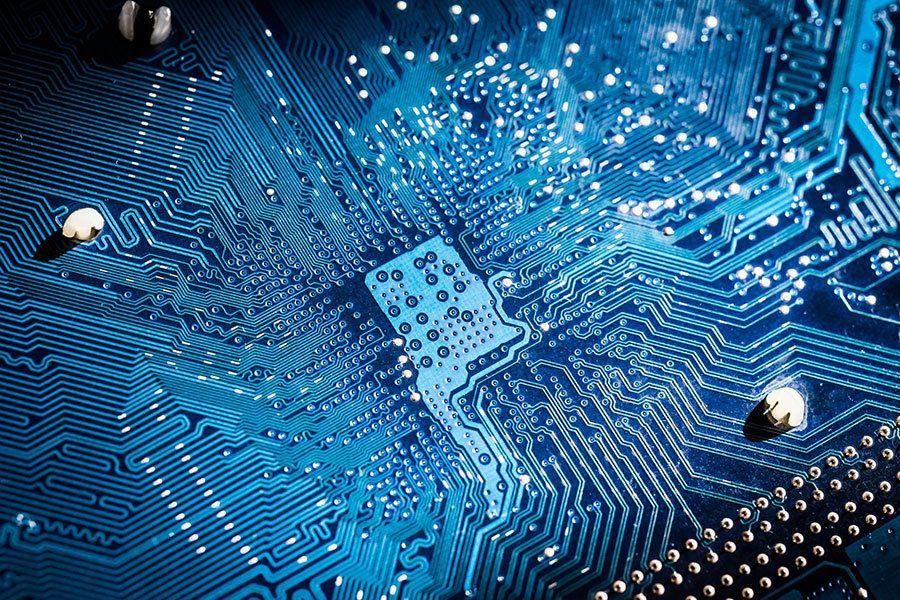
Printed Circuit Board – the foundation of modern electronic technology
The prototype of various printed circuit boards was thought to have been created by German engineer Albert Hansen. At the beginning of the last century, he proposed the formation of printed circuit boards by cutting or stamping on copper foil. The graphic elements are attached to the dielectric of the paraffin paper.
Although Edison did not use the term “printed circuit board”, many of his ideas were applied in the creation of printed circuit boards and in our era.
The original printed circuit board, created in 1920, is made of bakelite, masonite fiberboard, layered cardboard, and sheet metal. The material is drilled and then the “wire” made of flat brass is attached to the board. Sometimes even small nuts and bolts are used. Such printed circuit boards are used in the original radios and phonographs.
In the Second World War, there was a great demand for the technology for mass production of printed circuit boards, especially for the military use of radio equipment and aviation facilities. Since the mid-1950s, printed circuit boards have become the foundation of all household appliances.
Today, printed circuit boards are virtually non-competitive as the basis for electronic devices, and they are part of computers, cell phones, and military technology equipment.
The electronic components on the printed circuit board are usually connected by soldering. These components are required and are sufficient to ensure that the board is a printed circuit board.
Incidentally, the earliest predecessors of printed circuit boards were considered ordinary wires, usually insulated wires. Therefore, there can be a transition from line to plane in the development of radio equipment.
A single-sided printed circuit board has a wire formed by a printing method on one side of the thin plate. In a double-sided printed circuit board, the wires occupy the opposite side of the board. The transition from a single-sided printed circuit board to a double-sided printed circuit board is the first step from the plane to the three-dimensional road. The emergence of multi-layer printed circuit boards in 1961, the final transition to stereo.
For example, radio electronics technology is now a 25-layer multilayer printed circuit board produced by the company.
These boards can first miniaturize electronic devices. This space-saving advantage is quickly applied to aerospace technology equipment, aviation facilities, computers, missile systems, and weapons.
If the wire width in the original printed circuit board and the spacing between the wires are measured in millimeters, the development of electronic technology requires the creation of a printed circuit board having a component size of one-tenth of a millimeter. Printed circuit boards of this size are already common in today’s electronic devices.
At present, the radio board technology of the company is 2 micron and the thickness of the bottom plate is 0.25-1 mm. At the same time, the reliability of the internal connection of the multilayer circuit board can be controlled by using an X-ray device.
The development of these directions, for example, nanotechnology, has made all the most unrealistic predictions for the development of electronic infrastructure a complete reality. It may be more than just micron printed circuit boards, and even nano-miniature printed circuit boards. Currently, the individual component sizes of printed circuit boards are already close to nanometers.
Radio Electronics Technology The Ritz-Carlton National Instrument Factory, a subsidiary of the company, is one of the largest producers of flexible printed circuit boards in Russia.
One of the advantages of flexible printed circuit boards is that components of different shapes can be placed. Flexible printed circuit boards are made of polyimide material, and therefore their “substrate” is in a highly elastic state. Therefore, the internal volume of the product is substantially saved.
Not long ago, the radio electronics technology Konzern Joint Stock Company began testing components and modules based on innovative alumina board construction. The company evaluated the feasibility of using them in the production of promising civil and military radar systems and electronic countermeasures equipment.




